Share
- Jump to:
You might think your customers aren't online as a mom-and-pop shop, a local hole-in-the-wall, or a small business restaurant owner. You might think they find you by passing you on the streets or hearing about it from a friend. Before we get into why this is all a big no-no, just know that less than two-thirds of local businesses report having an active website. As a restaurant owner or manager, you’re likely busy putting out kitchen fires (hopefully not literal ones), managing operations, and feeding your customers. So, we get it – you already have a never-ending to-do list and this is one more task.
Online food ordering has grown 300% faster than dine-in since 2014 and now accounts for roughly 40% of the total restaurant sales. Not having an online presence is a big mistake, but it’s easy to fix, especially with all the available resources. Building a website these days is easy as pie.
Whether you’re a brand new restaurant or a decades-old neighborhood favorite, it’s 2022 and you need a website to get more customers in the front door. Having an awesome website for your restaurant doesn’t necessarily require coding or design skills. In this guide, we give you the recipe for making your own sizzling restaurant website.
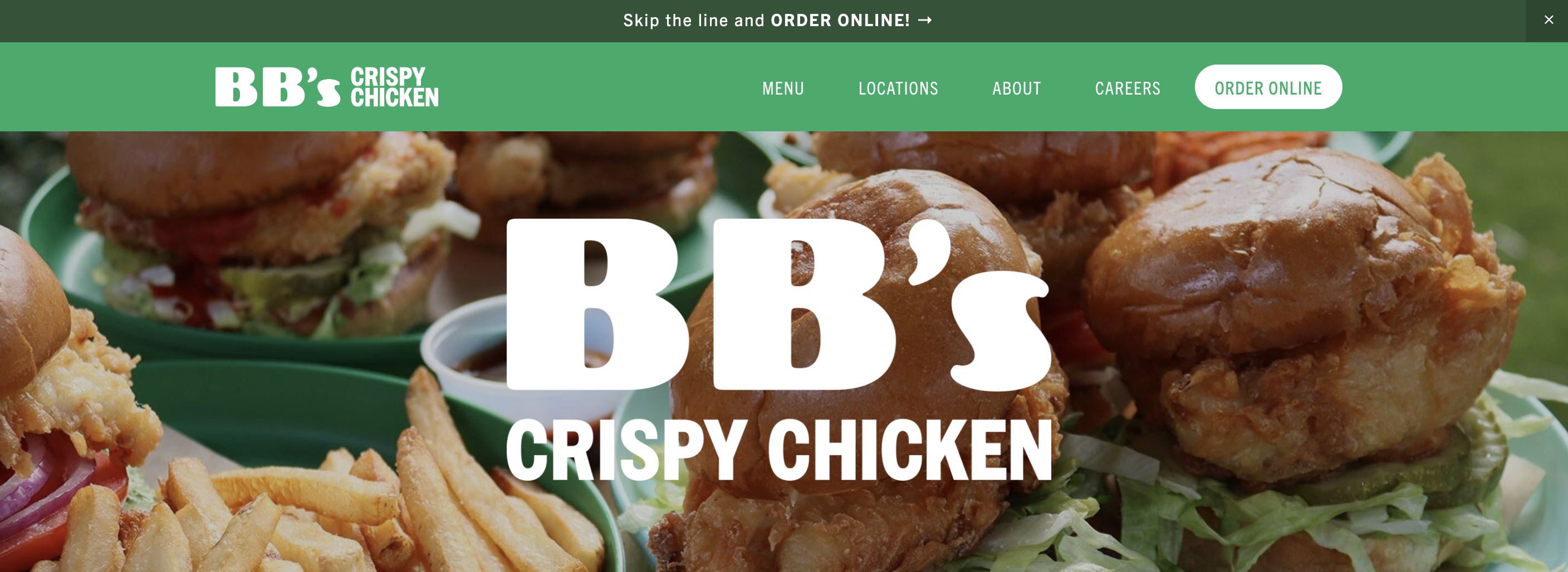
Source: BB’s Cripsy Chicken’s website.
Why do you need a restaurant website?
An online presence has the power to enhance your restaurant marketing efforts, get customers to find out who you are, come in to order, grab take-out, and share the experience with their friends. Googling is usually the first thing people do when looking for a place to eat. Not having an online presence these days is the equivalent of not having your business listed in the phonebook or not having a sign for your restaurant. Without a website, you’re essentially invisible to countless website visitors, aka potential customers.
Having an online presence will increase your exposure astronomically. And there are really no secret ingredients to having a great one – just make sure you have all of this when building a restaurant website that is sure to bring new customers in droves.
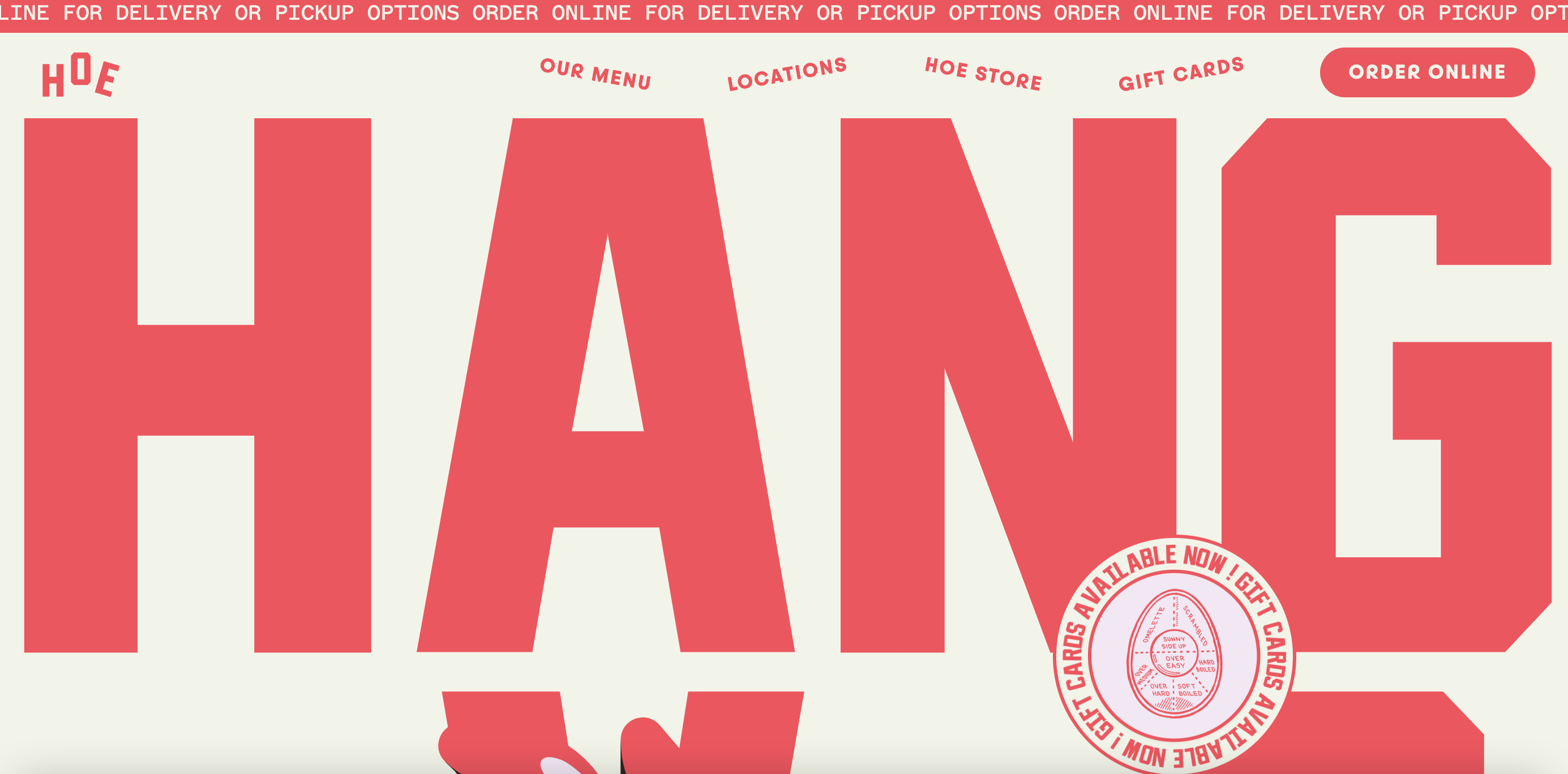
Source: Hangover Easy’s website.
Benefits of having a restaurant website.
There are plenty of advantages of having your own restaurant website, like providing a platform for all the essential information your customers may need to know about your restaurant including hours of operation, location, and an email or phone number. Below, we list more specific advantages that can benefit your restaurant.
1. Show up in local searches.
When someone is looking for a bite to eat nearby, there’s a good chance they'll Google "sushi near me" or "best burger near me." Is your restaurant coming up in these search results? If you don't have a website, it’s probably not.
Creating a website and claiming your Google My Business listing is the best way to ensure that your location shows up when diners near your restaurant are looking for a place to eat.
Don’t miss out on the opportunity for customers to find you.
2. Offer online delivery.
A report from Technomic shows that 86% of consumers are using take-out or food delivery options. With your own website, you don’t miss out on tapping into this market – a website makes it easy for customers to order delivery directly from you.
If you’re using third-party delivery apps, you’re well aware they come with steep fees of up to 15-30% sometimes, which eats away at a restaurant’s profit margin. As a small business, your profit margins are already likely thin, so don’t give away the profit that could be made to these third-party companies (they’ve got plenty of money). Restaurants with an online menu and online ordering system are able to raise their takeout profits by 30% higher than those who do not.
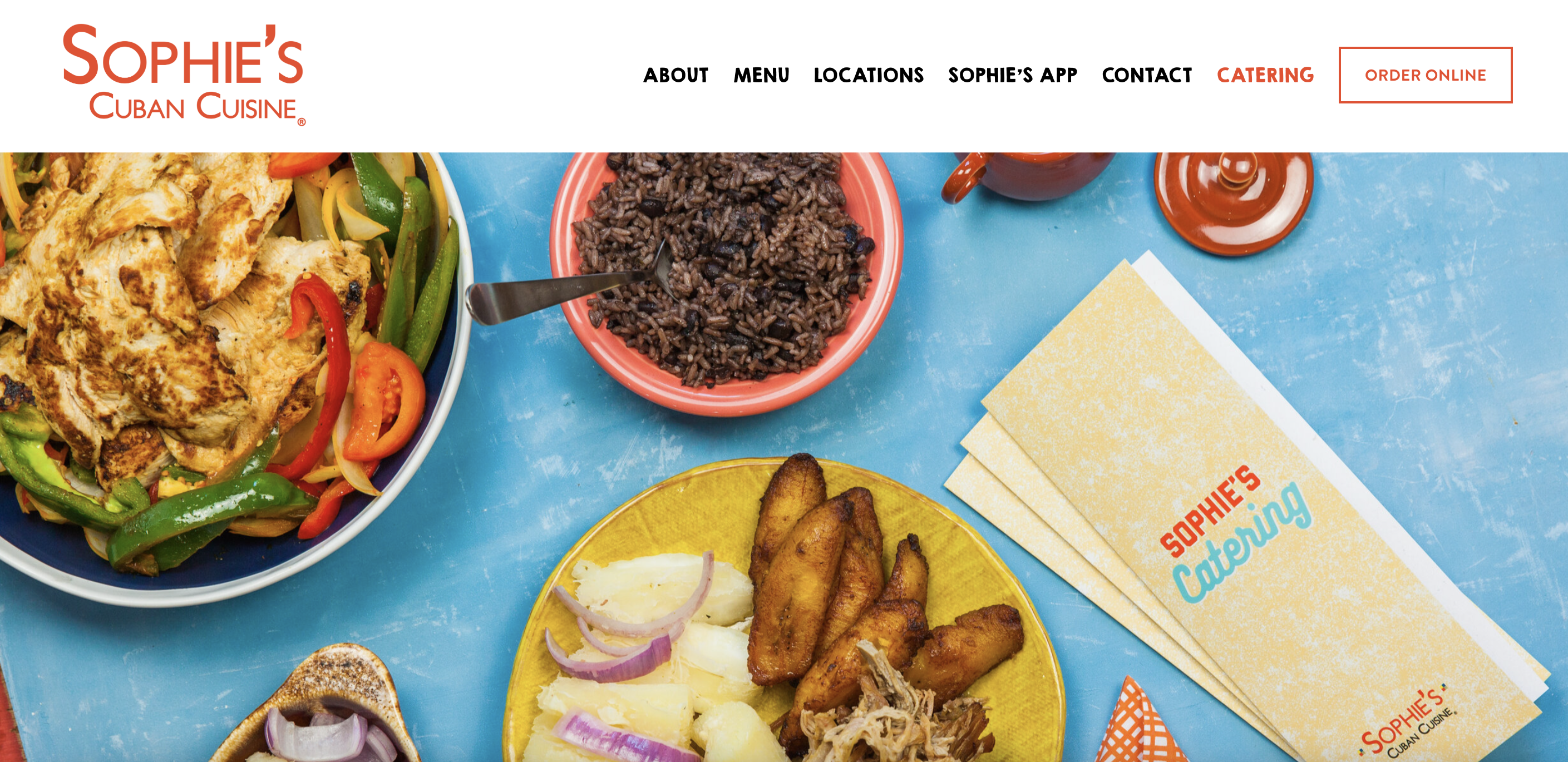
Source: Sophie’s Cuban’s website.
3. Offer online bookings.
Fun fact: most millennials hate making phone calls. Millennials are the generation that grew up bridging the digital age. They don’t have less patience to make the physical calls and potentially be on hold, which means they’ll likely go somewhere else if they need to call to access your restaurant details.
With your restaurant website, you can have your own digital booking system, which makes it easy for customers to make an online reservation – without having to make a phone call. Make it as easy as possible for your customers to get a seat at the table. When customers book online, it also saves your staff time from having to answer the phone constantly.
4. Be competitive.
Without a business website, customers will find your competitors – not you. With a website, you make yourself more available and are able to compete with other restaurants in your neighborhood, other restaurants that sell the same kind of food, and also larger brands. As a smaller restaurant, you’ll likely have smaller budgets for marketing and branding, and you may not have all the other bells and whistles larger brands have. Having a website isn't going to directly compete with any larger chains, but it’s the most crucial step. Print ads and flyers are expensive. With a website, you can display an endless amount of information at a fraction of the cost. This information is also available to your customers 24/7 and you can update it easily without re-printing or reworking.
If all of your competitors have an online presence to promote themselves, it only makes sense that you should too. Highlight what you do well as a restaurant and give your customers a reason to pick you over the others.
5. Build your brand.
Building your brand means generating awareness for your business, getting customers familiar with your offerings, and trusting your restaurant to have a great meal. Having a website helps increase that build that. When you build brand trust, it drives revenue. When people trust you to provide a good experience, they are more likely to choose you over your competition and recommend your restaurant to their friends.
A website is one of the first steps in helping customers become more acquainted with your brand. With further marketing, it will help more and more customers find you and try your food for themselves.
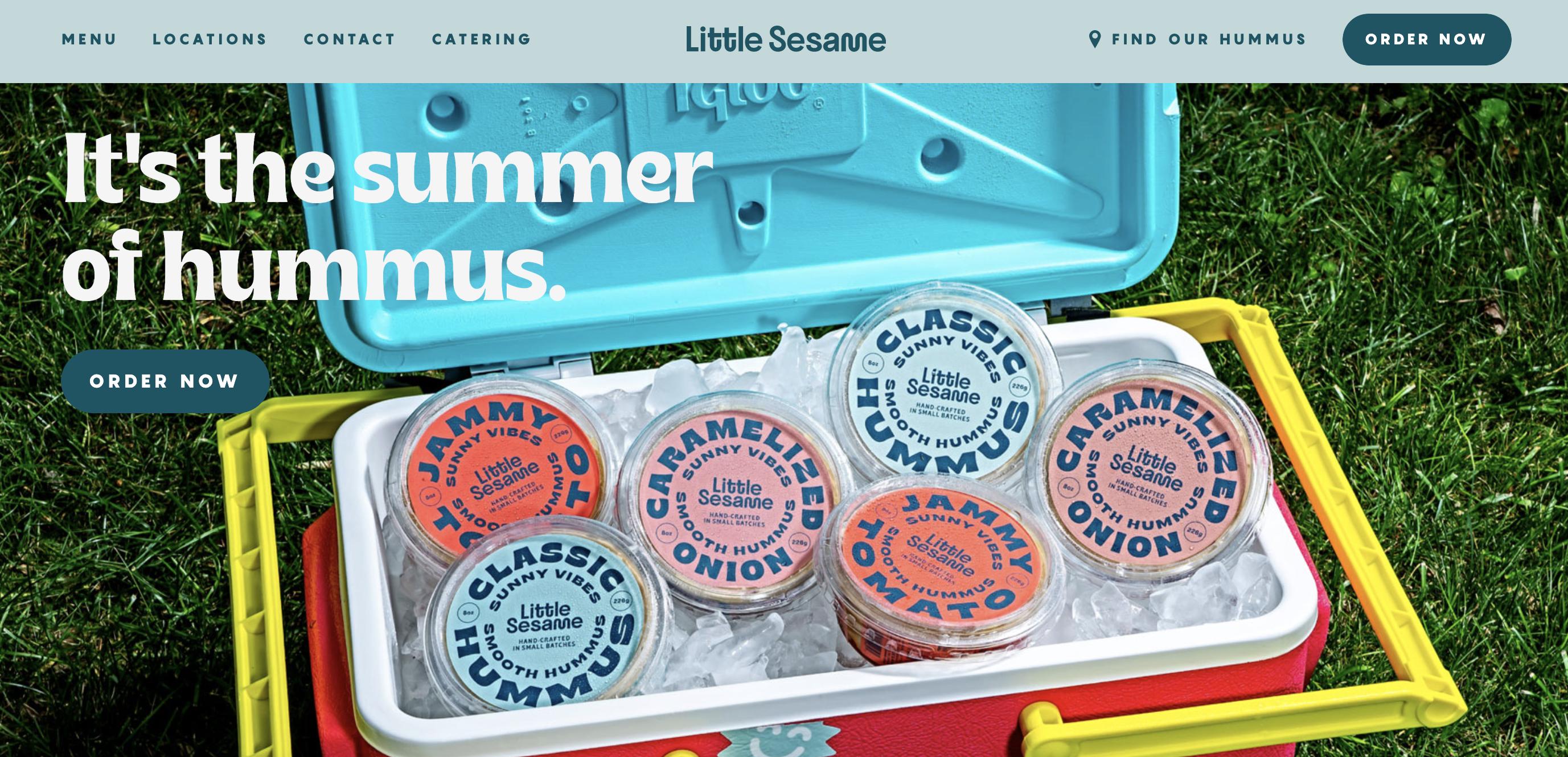
Source: Little Sesame’s website.
6. Increase revenue.
Everything above combined equates to more revenue. It’s projected that online ordering food revenue will rise to $220 billion in 2023 – 40% of restaurant sales. And the average U.S. household spends $2,375 annually on dining and takeout purchases. Don’t miss out on potential in-house dining or delivery opportunities because you don’t have an easy-to-get piece of crucial technology.
When people can find you, trust you to serve something they enjoy eating, and you provide a good experience, they are more likely to keep coming back. And even better, they’ll be your advocates and recommend your restaurant to their family, friends, and colleagues.

Source: Fill Bakeshop’s website.
Which Restaurant Website Builder Should You Use?
There are several ways to get your own restaurant website, including using restaurant website creators like Wix or hiring a web designer or web developer to build one for you. Some of the options will focus more on functionality, while some more on the website design. You don’t need to shell out too much money for one (and you shouldn’t) with all the resources available today.
1. Wix
Wix is a user-friendly option that provides all the functionality you need in a standard website builder. It has pre-built templates that are fully customizable so that you can use it as-is, or as a starting point to build off. You pay a monthly or annual fee depending on the package you choose.
2. Squarespace
Squarespace is a leading website builder for all types of sites, from simple to complex. It also offers tons of pre-built templates for you to use as-is or customize to your liking. It’s a great option for restaurants that sell both food and merchandise online as it has the most affordable online selling options with built-in food ordering tools. You pay a monthly or annual fee depending on the package you choose.
3. GoDaddy
GoDaddy has excellent booking tools and an event ticketing system, so it’s a great option for restaurants that double as an event space. You pay a monthly or annual fee depending on the package you choose.
5. Lunchbox Essential
Lunchbox Essential is specifically for single-location, mom-and-pop, or hole-in-the-wall restaurants. It’s a beginner-friendly, do-it-yourself online ordering webpage that can be set up in about 30 minutes. There are no fees, it’s your customers who pay a small convenience fee per order.
4. Shopify
Shopify is a big player in the e-commerce space, so naturally, their platform is available for those in the restaurant space for online ordering. Many restaurants turn to this tech giant to power their online orders and stores. You also pay a monthly or annual fee for the package you choose.
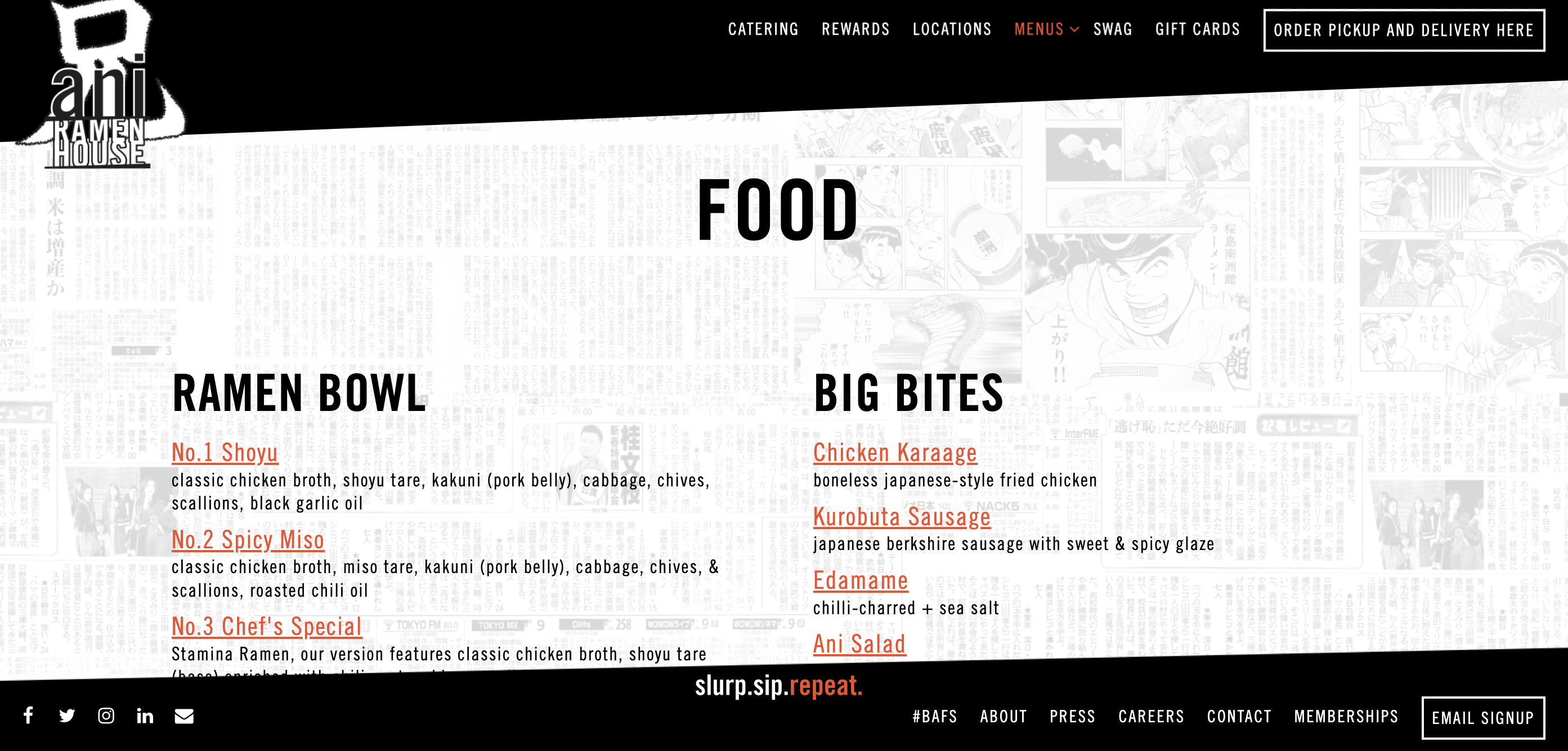
Source: Ani Ramen House’s website.
What should you include on your restaurant website?
You now know why you need a website and how to get one. Aside from your restaurant name, here’s everything else you should include on it to really cater to your audience, aka potential customers.
1. Contact information.
Make sure you are including a phone number, address (if you have multiple locations, make sure you clarify that), an email, and your store hours. A big reason people call restaurants is to check if and when they are open – having the hours available on the contact page saves time on the phone for both you and them. Bonus: if you have some positive customer feedback already, put a testimonial up as well.
2. Menu with prices.
If someone has never dined with you before, one of the first things they’re sure to check out on your website is the restaurant menu. Be sure to include all your menu items with prices – people are likely weighing out their options when choosing a restaurant and price is a major factor for most. If your prices aren’t readily available, they will move on to the next option. And of course, include high-quality images and photos of your food to entice them.
3. Online ordering.
No more third parties! Use an online ordering system that integrates with your restaurant technology. Orders get sent directly to your POS so there’s no more punching in orders as they come in from third parties.
4. Coupons and promotions.
One of the most popular marketing strategies for restaurants around the globe is coupons and promo codes. Coupons and discounts have proven to influence customer choice when it comes to selecting a restaurant. They trigger an initial visit, and after tasting the food and paying a reasonable price, they'll be inclined to come back for more.
And there you have it. The not-so-secret sauce to building your own website that will get customers booking tables, ordering in, and sharing the experience on social media or with their friends. Sometimes a restaurant website and your homepage are the first impressions someone has with your restaurant – be sure to make it a good one! Building a new website can be a major task, but once you’re up and running, the payback you receive from it is more than worth it.